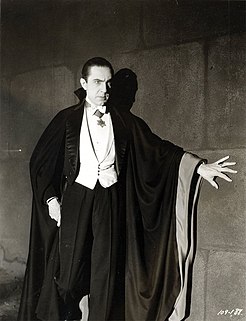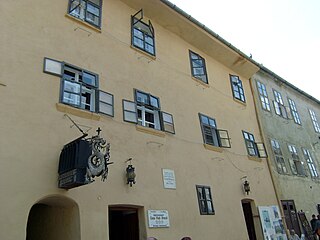 W
WVlad III, known as Vlad the Impaler or Vlad Dracula, was Voivode of Wallachia three times between 1448 and his death. He is often considered one of the most important rulers in Wallachian history and a national hero of Romania.
 W
WCount Dracula is the title character of Bram Stoker's 1897 gothic horror novel Dracula. He is considered to be both the prototypical and the archetypal vampire in subsequent works of fiction. He is also depicted in the novel to be the origin of werewolf legends. Some aspects of the character are believed to have been inspired by the 15th-century Wallachian Prince Vlad the Impaler, who was also known as Dracula, and by Sir Henry Irving, an actor for whom Stoker was a personal assistant.
 W
WThe Night Attack at Târgoviște was a battle fought between ied when Vlad invaded Bulgaria. In response, Mehmed raised a great army with the objective to conquer Wallachia and annex it to his empire. The two leaders fought a series of skirmishes, the most notable one being the Night Attack where Vlad attacked the Turkish camp in the night in an attempt to kill Mehmed. The assassination attempt failed and Mehmed marched to the Wallachian capital of Târgoviște, where he found a few men with cannons. After leaving the capital, Mehmed discovered 23,844 impaled Turks whom Vlad had killed during his invasion of Bulgaria. The number is mentioned by Vlad himself in a letter to Matthias Corvinus. The sultan and his troops then sailed to Brăila and burned it to the ground before retreating to Adrianople. Both sides claimed victory in the campaign and Mehmed's forces returned home with many captured slaves, horses, and cattle.
 W
WJustina Szilágyi de Horogszeg was a Hungarian noblewoman, who became the second wife of Vlad the Impaler, Voivode of Wallachia. She was the daughter of Ladislaus or Osvát Szilágyi and thus a cousin of Matthias Corvinus, King of Hungary. Corvinus first gave her in marriage to Wenceslas Pongrác of Szentmiklós. Pongrác had inherited estates in Upper Hungary, but was forced to renounce them in exchange for landed property he and Justina jointly received in Transylvania following their marriage. After Pongrác died in 1474, the widowed Justina married Vlad, whom Corvinus acknowledged as the lawful voivode of Wallachia in 1475. Vlad seized Wallachia in late 1476, but soon died in battle. To strengthen her claim to her Transylvanian estates, she married Paul Suki, who was related to the former owners of those territories. After the death of Suki, in 1479, Justina was married to John Erdélyi of Somkerék, until her death in 1497.
 W
WVlad Dracul House of Sighișoara is located in Tin Street No.1, between the Citadel square and the Clock Tower. It's the place were Vlad the Impaler, the historical character who inspired the Bram Stoker's Dracula, is supposed to be born, in 1431. His father, Vlad Dracul, the ruler of Wallachia, and his pregnant wife were hosted in this house by the mayor of Sighișoara between 1431 and 1435, during the Turkish invasion of Wallachia. It appears to be the oldest stone structure in the city, judging cylindrical vault river stone from the ground floor. Today Vlad Dracul house hosts a medieval -style restaurant on the ground floor and a tiny weapon museum on the first floor.
 W
WThe Vlad Țepeș League, later Conservative Party, was a political party in Romania, founded and presided upon by Grigore Filipescu. A "right-wing conservative" movement, it emerged around Filipescu's Epoca newspaper, and gave political expression to his journalistic quarrels. Primarily, the party supported the return of Prince Carol as King of Romania, rejecting the Romanian Regency regime. It achieved this goal in 1930, but failed to capitalize on the gains. LVȚ and PC monarchism was generally moderate and within the classical political spectrum, reclaiming the legacy of the old-regime Conservative Party; however, the League idealized efficient government by dictatorial means, and its fringes grouped ultra-nationalists and fascists.
 W
WVlad Țepeș is a commune in Călărași County, Muntenia, Romania. As of 2002 Vlad Țepeș has a population of 2,559.